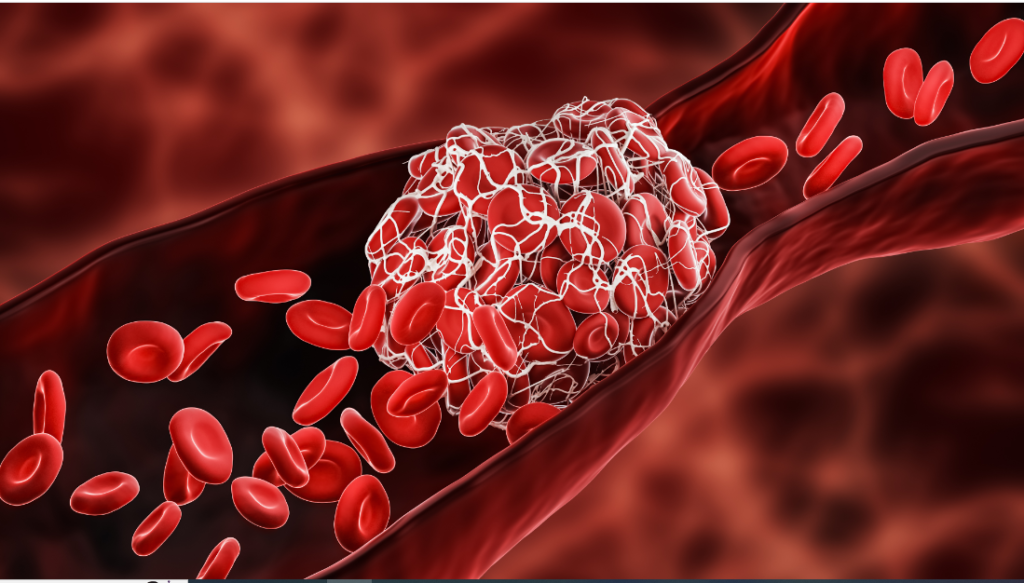
When you imagine someone getting blood clots, you may think of them as an elderly or sick person. Blood clots, however, can affect anyone, at any age, and can be fatal. In fact, blood clots are so common that currently they are the underlying cause of one in four deaths worldwide.
Venous thromboembolism (VTE) is a potentially fatal medical condition in which a blood clot forms, often in the deep veins of the leg, groin, or arm, otherwise known as deep vein thrombosis (DVT). If a part of this clot breaks off, it can travel through the circulatory system and lodge in the lungs as a pulmonary embolism (PE).
According to medical expert and spokesperson for World Thrombosis Day (WTD) campaign, Dr. Henry Ddungu, the impact of blood clots on health and well-being cannot be understated. Yet, he says, blood clots are often underdiagnosed due to the many misconceptions that exist about them.
“People think that if they’re active and healthy they’re guaranteed immunity against a blood clot. Or they believe that clots only happen when you fly long distance. Both are untrue. Understanding the facts surrounding blood clots is crucial for everyone so that we can promote early detection and timely treatment, which can save lives,” he says.
To better comprehend thrombosis and who it can affect, Dr. Ddungu discusses common misinformation around blood clots.
You’re physically fit, so not at risk of blood clots
This is undoubtedly one of the most prevalent thrombosis myths. Even if you are physically fit and lead an active lifestyle, you’re still at risk of a thrombosis – older people and those with poor health simply have a higher risk. “It’s important to exercise daily, like going for a run or to the gym, but exercise alone won’t stop you getting a blood clot,” cautions Dr. Ddungu.
Any time that you keep your body in a static state for an extended period – such as during long-haul travel or recuperating in bed after an operation – your circulation slows down and blood starts pooling in your extremities, which raises chance of blood clots forming.
Only the elderly or sick develop blood clots
Thrombosis does not discriminate, it affects people of all ages, races, and ethnicities. While the risk of thrombosis does increase with age – due to older people being more likely to develop other health conditions that increase the risk of thrombosis – blood clots can occur in young, healthy adults and even children and babies – although the chance of developing a DVT or PE is much lower in children than in adults.
“When seemingly healthy adults develop blood clots, factors like genetics often play a big role, especially if there are inherited blood clotting disorders or a family history of blood clots. Ensure that your doctor is well informed of any history of VTE cases in your family,” advises Dr. Ddungu.
Women are more likely than men to develop clots
Being pregnant and taking birth control pills or hormone replacement therapy puts women at a higher risk of getting blood clots, but thrombosis can impact anyone. The risk doesn’t specifically lie with the gender of a person, but rather with their age and stage of life. Women in their childbearing years are at a higher risk than men of the same age, due to pregnancy and the use of oral contraceptives – both of which increase a woman’s chance of getting a blood clot. But, says Dr. Ddungu, as people get older, the risk of thrombosis is statistically greater for men, who are more likely than women to develop clots as they age.
Blood clots mostly affect flight passengers
Another widespread myth is that blood clots most frequently happen while flying long distances. ”You do expose yourself to the risk of thrombosis if you travel in cramped conditions, like long-haul bus rides and flights where you have little leg room and don’t frequently stop to take a walk or get up to stretch your legs. However, there is a higher likelihood of blood clots for those who have sedentary lifestyles,” points out Dr. Ddungu.
Sitting or lying down for extended periods of time can lead to blood clots forming. This is important to note, especially for those working behind a desk full time. Schedule regular breaks in your daily work routine to get up and move around. According to data from WTD patients placed on bed rest are also at a high risk of VTE, with up to 60% of all VTE cases occurring during or within 90 days of hospitalisation.
Additional risk factors for DVT include smoking, major surgery, cancer treatments, obesity, diabetes, heart or lung disease, infectious conditions such as hepatitis, and inflammatory conditions like rheumatoid arthritis.
Thrombosis is a rare condition
Blood clots are far more common than most people realise, with a higher number of people dying of the life-threatening conditions caused by thrombosis than the total number of people who lose their lives to AIDS, breast cancer, and car crashes combined, every year.
Blood clotting is a natural occurrence in our bodies as it stops the blood flow from a cut or injury, but when clots develop unnecessarily, they can be fatal. It’s vital, therefore, to debunk blood clot myths and increase awareness. A widespread lack of understanding around thrombosis and its risk factors has led to the misconception that it is not a major medical condition, yet it can cause serious illness, disability, and even death, concludes Dr. Ddungu. If identified early on, blood clots can be treated and most patients recover fully to resume their normal day-to-day lives.
ENDS
Article by Dr. Henry Ddungu, a haematology consultant and medical expert and spokesperson for the World Thrombosis Day (WTD) campaign. He is the first member to represent Africa on behalf of the World Thrombosis Day Steering Committee, which is composed of leading international medical experts in the fields of haematology, thrombosis and hemostasis, vascular and general internal medicine, and public health.


